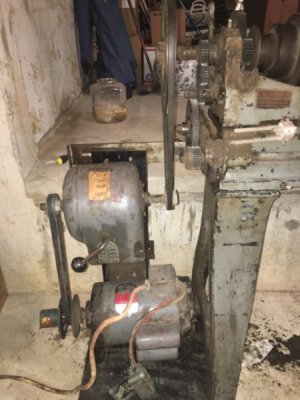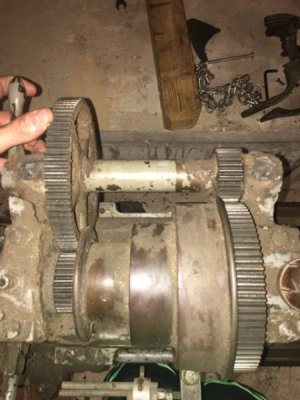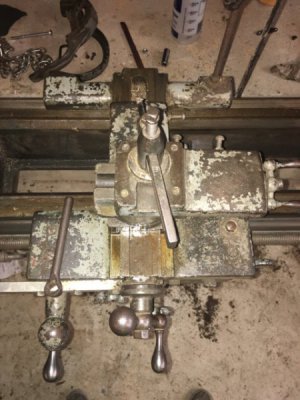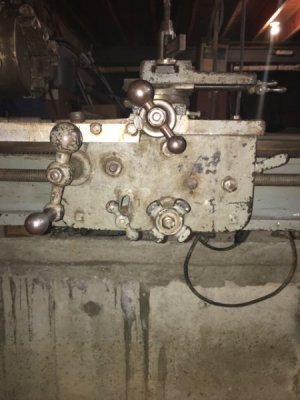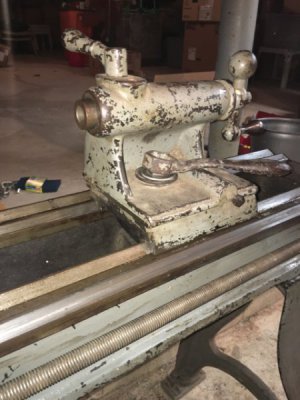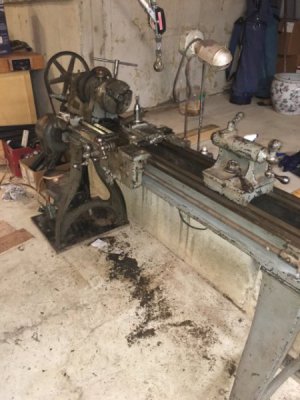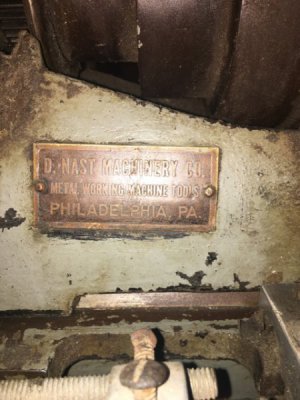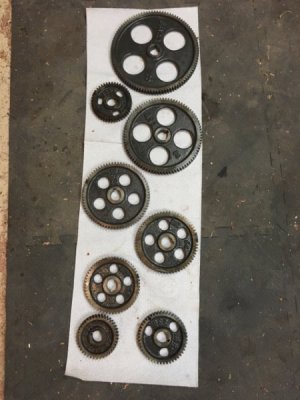- Joined
- Aug 23, 2016
- Messages
- 32
Hi, this is my first post on the forum. I've done a lot of woodturning but I have no experience with metal. I joined here because I'm excited to learn and I'm sure having this resource will be infinitely useful.
Anyway I'll try and get down to the point of this thread. I've just acquired a D. Nast machinery Co. 11" by 36" lathe. (Anybody know anything about this company? I did a quick Google search and it seems they may still be around.) My dad and I moved it and it. is. heavy. I'm sure all of the more experienced machinists know this, but for me coming over from woodworking tools I was in awe of the weight. Everything about it just screams heavy duty.
All the metal parts (ways, flats on compound, lead screw) are in great shape for a 50+ year old tool. Zero rust to speak of. But there is the usual layer of grease, grit, gunk and unpleasantness that needs to be removed. This isn't stuff that's coming off with a paper towel. So how do I go about cleaning this old beast? I was thinking some rags and mineral spirits? Or would simple green work? (I'm a rower and that's what we use to clean our seat tracks) And does anyone have a de-greaser they'd reccomend that I could grab at Home Depot? My plan now is to go over everything with something (mineral spirits/simple green/ your recommendation), then give everything a wipe with some de-greaser, then maybe some scotch brite to shine up the ways and handles and such.
I've always been bad at keeping forum posts short and to the point so I apologize for the rambling, and thank you in advance for any help.
Anyway I'll try and get down to the point of this thread. I've just acquired a D. Nast machinery Co. 11" by 36" lathe. (Anybody know anything about this company? I did a quick Google search and it seems they may still be around.) My dad and I moved it and it. is. heavy. I'm sure all of the more experienced machinists know this, but for me coming over from woodworking tools I was in awe of the weight. Everything about it just screams heavy duty.
All the metal parts (ways, flats on compound, lead screw) are in great shape for a 50+ year old tool. Zero rust to speak of. But there is the usual layer of grease, grit, gunk and unpleasantness that needs to be removed. This isn't stuff that's coming off with a paper towel. So how do I go about cleaning this old beast? I was thinking some rags and mineral spirits? Or would simple green work? (I'm a rower and that's what we use to clean our seat tracks) And does anyone have a de-greaser they'd reccomend that I could grab at Home Depot? My plan now is to go over everything with something (mineral spirits/simple green/ your recommendation), then give everything a wipe with some de-greaser, then maybe some scotch brite to shine up the ways and handles and such.
I've always been bad at keeping forum posts short and to the point so I apologize for the rambling, and thank you in advance for any help.

